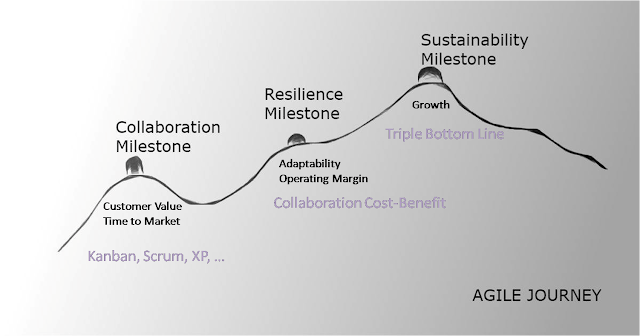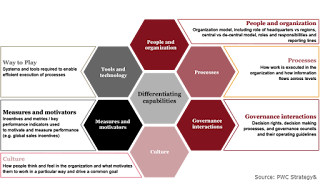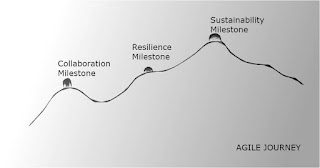Resilience Practice
This series is part of developing our Resilience practice.
What is Resilience?
Many consider resilience as the organizations capacity to dynamically (as opposed to running a structured change program) adapt to change, or the ability to 'bounce back' from a crisis. While this is true, a change that is significant or even a crisis is not a single event, it is a chain of events that an organization that is adequately sensitized can sense and adapt to, continuously. That capacity is organizational resilience.
Where does Resilience fit in an agile transition?
We view agile transitions as a three phase transition - team agile, business resilience and business sustainability - with each phase having different objectives and milestones as shown below.
How do we develop Organizational Resilience?
That is the subject matter of this blog.
What tools/techniques are available to develop organizational resilience?
At its core, Resilience is an attribute of both awareness and structure. Awareness is built through constant training and upskilling and the refinement of the organizations' decision processes. And structure alludes not to 'hierarchy', but to an organization's collaborative pathways. The tool used for analysis is based on graph theory, supplemented by decision process mapping, collaboration cost/benefit, email tracking, tacit interactions, observation of employees, using existing data (such as time cards or project charge codes), and administering short (5- to 20-minute) questionnaires.
The real value comes when companies move from mapping interactions to quantifying the benefits and costs of collaboration. This requires an assessment of the time employees spend on interactions of various types, as well as the savings and sales contributions of specific collaborations. Key inputs to this analysis [McKinsey] include fully loaded compensation figures of network participants and detailed survey results.
REFERENCES
1. Mapping the Value of Employee Collaboration, Robert Cross, Roger Martin, Leigh Weiss, McKinsey & Co, Aug'2006
What is Resilience?
Many consider resilience as the organizations capacity to dynamically (as opposed to running a structured change program) adapt to change, or the ability to 'bounce back' from a crisis. While this is true, a change that is significant or even a crisis is not a single event, it is a chain of events that an organization that is adequately sensitized can sense and adapt to, continuously. That capacity is organizational resilience.
Where does Resilience fit in an agile transition?
We view agile transitions as a three phase transition - team agile, business resilience and business sustainability - with each phase having different objectives and milestones as shown below.
How do we develop Organizational Resilience?
That is the subject matter of this blog.
What tools/techniques are available to develop organizational resilience?
At its core, Resilience is an attribute of both awareness and structure. Awareness is built through constant training and upskilling and the refinement of the organizations' decision processes. And structure alludes not to 'hierarchy', but to an organization's collaborative pathways. The tool used for analysis is based on graph theory, supplemented by decision process mapping, collaboration cost/benefit, email tracking, tacit interactions, observation of employees, using existing data (such as time cards or project charge codes), and administering short (5- to 20-minute) questionnaires.
The real value comes when companies move from mapping interactions to quantifying the benefits and costs of collaboration. This requires an assessment of the time employees spend on interactions of various types, as well as the savings and sales contributions of specific collaborations. Key inputs to this analysis [McKinsey] include fully loaded compensation figures of network participants and detailed survey results.
REFERENCES
1. Mapping the Value of Employee Collaboration, Robert Cross, Roger Martin, Leigh Weiss, McKinsey & Co, Aug'2006




Comments
Post a Comment